| Date | Text | |
|---|---|---|
30 Nov 1893

GMT |
GMT (astronomy) March 21 (23:00 GMT) – Syzygy: Mercury transits the Sun as seen from Venus, and Mercury and Venus both simultaneously transit the Sun as seen from Saturn. |
|
30 Nov 1893
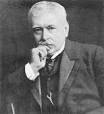
Patrick Manson |
Patrick Manson (biology) Patrick Manson develops the thesis that malaria is spread by mosquitoes. |
|
30 Nov 1893

Jean Pierre Mégnin |
Jean Pierre Mégnin (biology) Jean Pierre Mégnin publishes La faune des cadavres application de l'entomologie à la médecine légale in Paris, an important text in forensic entomology. |
|
30 Nov 1893
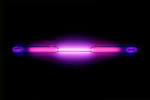
Argon |
Argon (chemistry) Argon identified by Lord Rayleigh and Sir William Ramsay. |
|
30 Nov 1893
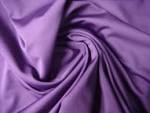
Viscose |
Viscose (chemistry) Viscose, a form of artificial silk or rayon, is patented by Charles Frederick Cross with Edward John Bevan and Clayton Beadle. |
|
30 Nov 1893

United States |
United States (psychology) Psychological Review established in the United States by James Mark Baldwin and James McKeen Cattell. |
|
30 Nov 1893
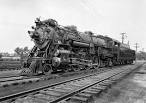
locomotive |
locomotive (technology) Construction of the first oil-engined rail locomotive, an experimental unit designed by William Dent Priestman and built by his company, Priestman Brothers of Hull, England. |
|
30 Nov 1893

John Joly |
John Joly (technology) John Joly of Dublin devises the Joly colour screen, an additive colour photographic process for producing images from a single photographic plate. |
|
30 Nov 1893
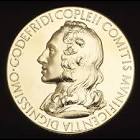
Copley Medal |
Copley Medal (awards) Copley Medal: Edward Frankland |
|
30 Nov 1893
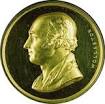
Wollaston Medal |
Wollaston Medal (awards) Wollaston Medal for Geology: Karl von Zittel |
|
01 Jan 1894

S. N. Bose |
birth S. N. Bose S. N. Bose (died 1974), Indian physicist. |
|
01 Jan 1894
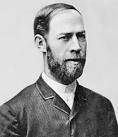
Heinrich Hertz |
death Heinrich Hertz Heinrich Hertz (born 1857), physicist. |
|
02 Feb 1894

Edmond Frémy |
death Edmond Frémy Died 2 Feb 1894 at age 79 (born 28 Feb 1814). French chemist best known for his discovery of hydrogen fluoride and investigations of fluorine compounds. Among other compounds, Frémy investigated those of iron, tin, and lead. He also studied osmic acid, ozone, the colouring substances of leaves and flowers, and the composition of animal substances. He applied chemistry to the commercial saponification of fats, and to the technology of iron, steel, sulfuric acid, glass and paper. He tried, but failed, to isolate the element fluorine. He also failed in attempts to make crystals of aluminium oxide, but instead found he could create rubies. |
|
11 Feb 1894

Izaak Kolthoff |
birth Izaak Kolthoff Izaak Kolthoff (died 1993), Dutch 'father of analytical chemistry'. |
|
13 Feb 1894

Auguste and Louis Lumière |
Auguste and Louis Lumière (technology) Auguste and Louis Lumière patent the Cinematographe, a combination movie camera and projector. |
|
30 Mar 1894

Sergey Vladimirovich Ilyushin |
birth Sergey Vladimirovich Ilyushin Born 30 Mar 1894; died 9 Feb 1977 at age 82. Soviet aircraft designer who created the famous Il-2 Stormovik armoured attack aircraft, the most used and the most produced plane during WWII by the Soviet Union Air Force. After the war he worked for a short time on jet bombers and designed one of the most successful planes of that time, Il-28. In 1950's he stopped working on warplanes and concentrated his studies on turboprop and turbojet powered passenger and transport planes. The civil aircraft he designed include: the Il-12 twin-engined passenger aircraft (1946), the Il-18 Moskva four-engined turboprop transport (1957), the Il-62 turbojet passenger carrier (1962), and the Il-86 airbus, which made its first flight in 1976. |
|
31 Mar 1894

Pavel Yablochkov |
death Pavel Yablochkov Died 31 Mar 1894 at age 46 (born 14 Sep 1847). Pavel Nikolayevich Yablochkov (also called Paul Jablochkov) was a Russian electrical engineer who invented an improved arc lamp, known as the Yablochkov candle (1876). Being cheap and relatively inexpensive, it was used in public buildings and to light streets for several decades before the advent of incandescent lighting which required much less maintenance. A brilliant white light was produced by an electric arc between two parallel carbon rods, using alternating current to ensure that the rods vaporised at equal rates. Yablochkov candles were used from 1877 in Paris, and were installed in London along Victoria Embankment (1878), followed by Billingsgate fish market, the Mansion House and Holborn Viaduct. |
|
30 Apr 1894

Iceberg |
Iceberg In 1894, an Antarctic iceberg fragment was sighted at a latitude 26.50 degrees south, comparable to Rio de Janeiro. Reported by the ship Dochra, this remains the nearest to the equator that an Antarctic iceberg has been seen. Sightings of large icebergs as far north as 42 degrees south were made from 15 vessels in 1893. The Falkland Islands Gazette warned that year of exceptional ice conditions with large icebergs in shipping lanes around Cape Horn and commented: "Ice in this latter position is absolutely unknown, and must be looked upon as a great danger." |
|
23 Jun 1894
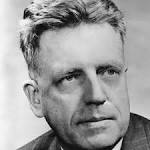
Alfred Kinsey |
birth Alfred Kinsey Alfred Kinsey (died 1956), American biologist, professor of entomology and zoology, and sexologist who in 1947 founded the Institute for Sex Research at Indiana University. |
|
25 Jun 1894

Hermann Oberth |
birth Hermann Oberth Born 25 Jun 1894; flourished 29 Dec 1989 at age 95. Hermann Julius Oberth was an Austro-German rocket engineer was a German scientist who was one of three founders of space flight (with Tsiolkovsky and Goddard). After injury in WWI, he drafted a proposal for a long-range, liquid-propellant rocket, which the War Ministry dismissed as fanciful. Even his Ph.D. dissertation on his rocket design was rejected by the University of Heidelberg. When he published it as Die Rakete zu den Planetenräumen (1923; “The Rocket into Interplanetary Space”) he gained recognition for its mathematical analysis of the rocket speed that would allow it to escape Earth's gravitational pull. He received a Romanian patent in 1931 for a liquid-propellant rocket design. His first such rocket was launched 7 May 1931, near Berlin. |
|
17 Jul 1894
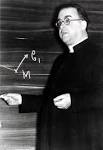
Georges Lemaître |
birth Georges Lemaître Georges Lemaître (died 1966), Belgian physicist. |
|
13 Aug 1894
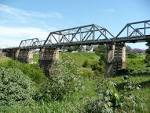
Allan truss bridge |
Allan truss bridge (technology) The first Allan truss bridge, designed by Percy Allan, is completed in New South Wales. |
|
14 Aug 1894
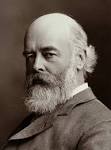
Oliver Lodge |
Oliver Lodge (technology) Oliver Lodge demonstrates radio transmission (of Morse code) in the University of Oxford from the Clarendon Laboratory to the University Museum for the British Association for the Advancement of Science. |
|
24 Aug 1894

Rudolf Oskar Robert Williams Geiger |
birth Rudolf Oskar Robert Williams Geiger Born 24 Aug 1894; died 22 Jan 1981 at age 86. German meteorologist who was one of the founders of microclimatology (the study of the climatic conditions within a few metres of the ground surface). His observations, made above grassy fields or areas of crops and below forest canopies, elucidated the complex and subtle interactions between vegetation and the heat, radiation, and water balances of the air and soil. |
|
08 Sep 1894

Hermann von Helmholtz |
death Hermann von Helmholtz Hermann von Helmholtz (born 1821), physicist. |
|
20 Sep 1894
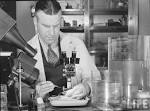
G. Kingsley Noble |
birth G. Kingsley Noble Born 20 Sep 1894; died 9 Dec 1940 at age 46. Gladwyn Kingsley Noble was an American biologist and zoologist. After WW I, he began his life's work at the American Museum of Natural History, specializing in herpetology (the study of reptiles and amphibians) and experimental biology investigations using techniques of endocrinology and neurology. In an article published in Nature on 7 Aug 1926, Noble debunked Paul Kammerer's claim that he had induced nuptial pads on midwife toads that were hereditary. After Noble examined a preserved specimen, he revealed the pad was simulated with injected Indian ink. This set off an academic bombshell. He died at the very height of his ability, at age 47, from a streptococcus infection of the throat. |
|
07 Oct 1894
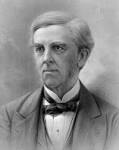
Oliver Wendell Holmes, Sr. |
death Oliver Wendell Holmes, Sr. Oliver Wendell Holmes, Sr. (born 1809), physician and writer. |
|
06 Nov 1894
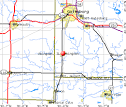
Abingdon, Illinois |
Abingdon, Illinois (technology) William C. Hooker of Abingdon, Illinois is granted a United States patent for a spring-loaded mousetrap. |
|
19 Nov 1894

Heinz Hopf |
birth Heinz Hopf Heinz Hopf (died 1971), German mathematician. |
|
26 Nov 1894

Pafnuty Chebyshev |
death Pafnuty Chebyshev Pafnuty Chebyshev (born 1821), mathematician. |
|
08 Dec 1894

Pafnuty Lvovich Chebyshev |
death Pafnuty Lvovich Chebyshev Died 8 Dec 1894 at age 73 (born 16 May 1821). Russian mathematician who founded the St. Petersburg mathematical school (sometimes called the Chebyshev school), who is remembered primarily for his work on the theory of prime numbers, including the determination of the number of primes not exceeding a given number. He wrote about many subjects, including the theory of congruences in 1849, probability theory, quadratic forms, orthogonal functions, the theory of integrals, the construction of maps, and the calculation of geometric volumes. Chebyshev was also interested in mechanics and studied the problems involved in converting rotary motion into rectilinear motion by mechanical coupling. The Chebyshev parallel motion is three linked bars approximating rectilinear motion. |